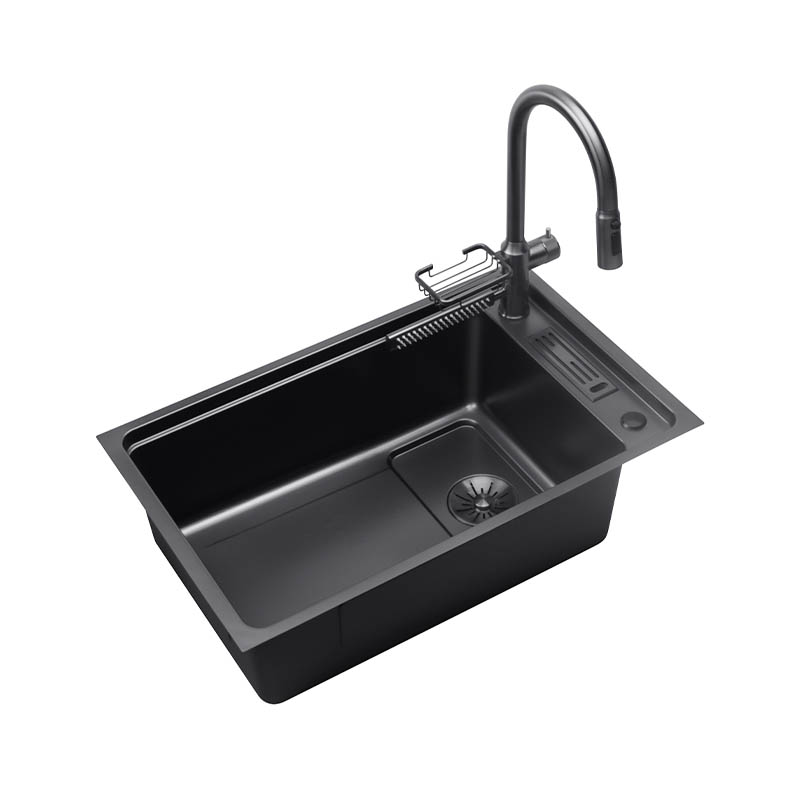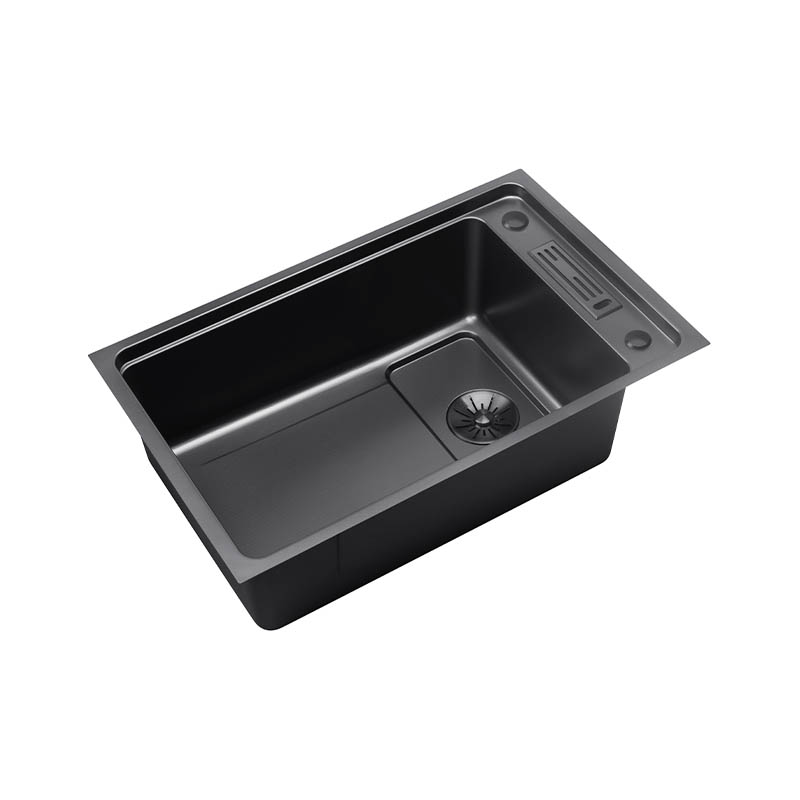
Cleaning a kitchen step sink can be tricky. What design features make cleaning easy and quick?
Publish Time: 2025-11-17
In modern family kitchens, the sink is not only the core area for washing vegetables, dishes, and preparing food, but also the most frequently used and easiest place for grease and food scraps to accumulate. Traditional flat-bottomed single or double sink designs, while functionally clear, often make cleaning a headache due to problems like difficult-to-clean corners, water accumulation on the countertop, and cluttered items. However, the increasingly popular kitchen step sink, with its innovative and user-friendly structure, not only significantly improves space utilization but also integrates "easy cleaning" into every detail, truly achieving a balance between practicality and aesthetics. Especially when made of high-quality 304 stainless steel, its durability, corrosion resistance, and ease of cleaning are further enhanced.1. Stepped Structure: Rational Zoning, Thorough CleaningThe most distinctive feature of a kitchen step sink is its internal staggered "steps" or "platforms," typically divided into two levels: a shallow upper zone for washing fruits and vegetables, draining water, or temporarily placing tableware; and a deep lower zone specifically for soaking pots and pans and rinsing greasy dishes. This vertical zoning design fundamentally solves the chaotic situation of traditional sinks where "everything is piled up together."More importantly, the edges of the steps are mostly rounded with large R-angles, eliminating right-angle seams. Oil and food residue are less likely to get stuck in corners, and water flow can naturally wash them to the drain, greatly reducing the frequency of manual scraping. At the same time, the flat and spacious upper platform can directly place a drain basket or cutting board, preventing water stains from spreading to the countertop and reducing the burden of secondary cleaning from the source.2. 304 Stainless Steel Material: Durable and Corrosion-Resistant, Easy to CleanThe kitchen step sink's ability to remain clean and new for a long time is inseparable from its core material—food-grade 304 stainless steel. This alloy contains 18% chromium and 8% nickel, possessing exceptional resistance to oxidation, acids, alkalis, and corrosion. Even with prolonged contact with detergents, citric acid, or salt, it will not rust or discolor.The 304 stainless steel surface undergoes a fine brushed or nano-coating treatment, resulting in a high-end feel, wear resistance, and scratch resistance, while effectively preventing limescale and fingerprint adhesion. For daily cleaning, simply wipe gently with a soft cloth dampened with neutral detergent; oil stains and watermarks will be quickly removed without the need for vigorous scrubbing or chemical detergents. Even if scratches are accidentally left, the even brushed texture cleverly conceals them, maintaining the overall aesthetic appeal.3. High-efficiency drainage and splash-proof design: Enhancing cleaning efficiency through detailsKitchen step sinks typically feature a large-diameter, fast-drain design. Combined with the sloping bottom of the deep lower section, this achieves "instant drainage," preventing wastewater stagnation and bacterial growth. Some high-end models also integrate an anti-odor, anti-clogging filter system, which can be easily disassembled and cleaned to intercept food scraps, rice grains, and other debris, reducing the risk of pipe blockage.Furthermore, the sink's edge utilizes a seamless, integrated welding process, ensuring a tight fit with the countertop and eliminating the problem of dirt and grime accumulating in traditional glue seams. The front backsplash, slightly higher than the countertop, effectively prevents water splashing, keeps cabinets dry, and indirectly extends the overall lifespan of the kitchen.4. Maximizing Space Utilization: Neatness and Order are the Prerequisites for Easy CleaningThe kitchen step sink's "high space utilization" is not only reflected in its vertical zoning but also in its optimized kitchen workflow. The upper platform can serve as a temporary work area; chopped vegetables can be directly placed on the lower level for rinsing, ensuring a smooth flow. Washed dishes can be placed on the upper level to drain while washing continues below, without interference. This integrated "wash-drain-store" layout significantly reduces the need to move items back and forth and avoids water accumulation and clutter around the sink, naturally reducing cleaning frequency and difficulty. For small kitchens, the single-sink stepped design can also replace the traditional double sink, saving horizontal space while retaining multifunctionality, truly achieving "maximum utility in a small space."5. Aesthetics and Practicality Combined: The Ideal Choice for Modern KitchensBeyond its functional advantages, the kitchen step sink's simple geometric shape and metallic sheen perfectly complement current minimalist, industrial, or understated luxury styles. The cool tones of 304 stainless steel harmonize with quartz, slate, or wooden countertops, enhancing the overall kitchen's ambiance. Its durability means a one-time investment for long-term benefits—no need for frequent replacements or worries about fading or warping.The kitchen step sink systematically addresses these pain points through its scientifically designed stepped zoning, 304 stainless steel construction, efficient drainage system, and integrated manufacturing process. It not only makes every wash easy and quick but also subtly elevates the quality of life with a clean and organized user experience. In modern homes that prioritize both efficiency and aesthetics, the kitchen step sink is undoubtedly a wise choice that combines intelligence and style.



